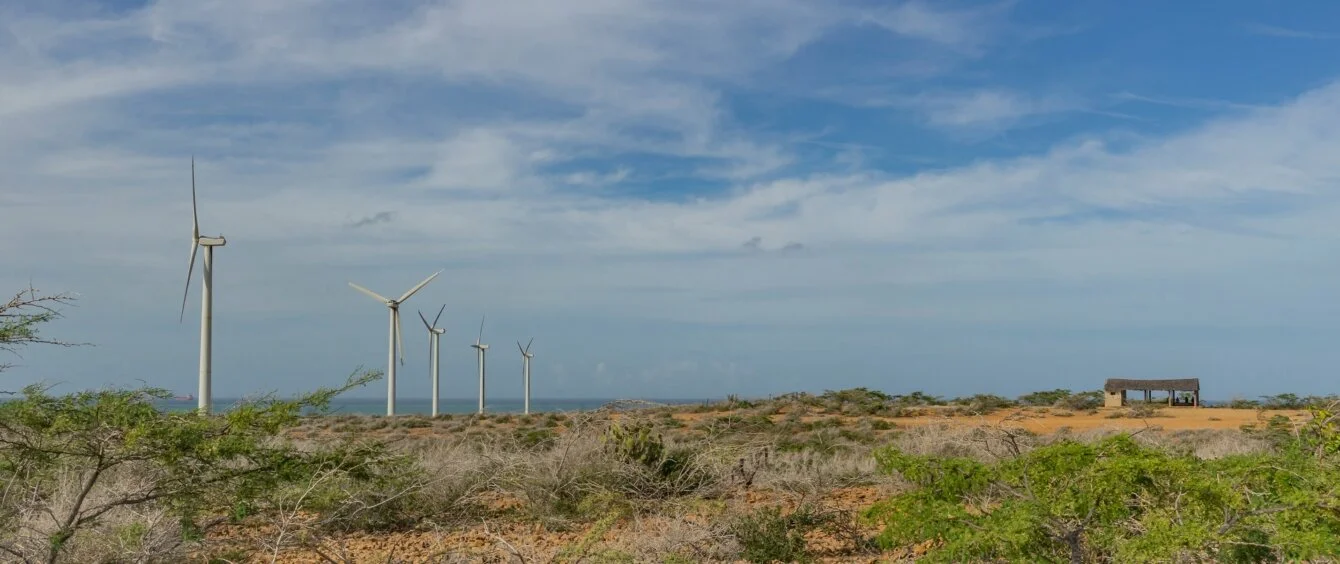Almost all operational offshore wind farms are currently in Europe and Asia, but interest is spreading globally. In South America, Colombia has taken pole position in the race to deliver the continent’s first offshore wind development.
The country plans to hold its first offshore wind tender in the second half of 2023 for acreage in the Central Caribbean zone off the departments of Bolivar and Atlántico. Once permits have been assigned, projects will proceed through licensing and the maritime concession application process.
Two pilot projects have already made progress.
A memorandum of understanding was signed by the city of Baranquilla in January 2022 for the Baranquilla offshore wind farm, with planned capacity of 350-400 MW. Meanwhile, the 200 MW Vientos Alisios project was granted pre-feasibility status in January 2021 and a guarantee was secured in April 2022 from Unidad de Planeación Minero-Energética (UPME) for a 200 MW connection to the national electricity grid.
Both projects are slated for completion in or around 2026/27.
Offshore wind potential in excess of 50 GW
Offshore wind offers Colombia huge clean energy potential. According to its Offshore Wind Roadmap, the country’s northern coastline has wind speeds greater than 10 metres/second (m/s) at a hub height of 150 metres, with the coast off the region of La Guajira the most promising. The country’s western Pacific Ocean coastline is less prospective with wind speeds below 6 m/s.
The country’s Caribbean coast also has attractive water depths, with significant acreage of up to 70 metres, which could host traditional fixed-bottom installations. Deeper waters further out are suitable for floating wind.
Narrowing down potential sites to six for fixed-bottom installations and eight for floating wind shows potential capacity of 27.2 GW and 21.6 GW respectively, enough to have a transformative impact on Colombia’s electricity system.
If the sector is adequately supported, for example by dedicated technology specific tenders, the World Bank estimates that 1 GW of offshore wind could be developed by 2030, 3 GW by 2040 and 9 GW by 2050.
Transmission constraints
However, the Roadmap, which was developed in conjunction with the World Bank, notes that major investment in new transmission infrastructure is necessary to access the country’s offshore wind potential. Competition is expected to be particularly acute in the La Guajira region, where there is currently no surplus transmission capacity for offshore projects and all planned expansions have been assigned to onshore projects.
A lack of transmission capacity and competition with onshore renewables could prove a major barrier to the development of Colombia’s offshore wind resource.
Electricity system dominated by hydro power
Colombia to date has not installed much onshore wind or solar, but capacity is expected to rise in coming years, following tenders held in 2019 and 2020. A tender held at the end of 2019 made awards for 1.3 GW of wind and solar projects for completion in 2022.
Currently, the electricity system is dominated by hydro power, which provides more than 60% of the country’s electricity needs. Colombia’s hydro generation can be very variable, depending on the level of rainfall and ice melt in the Andes, which are becoming less predictable as a result of climate change. Hydro generation can also be heavily affected by the el Niño weather phenomenon.
Colombia is still developing untapped hydro potential. The first two units of the much-delayed Hidroituango project became operational in December, adding 600 MW. Project completion, expected by 2024, will see capacity rise to 2.4 GW, sufficient to meet around 17% of the country’s electricity demand.
With wind power away from fossil fuels
Variations in hydro power output are typically addressed by fossil fuel generation. Colombia is a large exporter of coal, and also produces oil and natural gas. It has a liquified natural gas terminal to import gas, if domestic supplies prove insufficient.
Offshore wind could therefore play a significant role in diversifying the country’s energy mix and extending the decarbonisation of the country’s electricity system beyond hydro power.
Taking a lead in the sector could bring substantial additional benefits, if Colombia manages to become a regional supply chain hub for more widespread development of offshore wind in South America. Granting permits in the second half of 2023 will be a major step forward for the country’s nascent offshore wind sector and potentially demonstrate a pathway for other South American countries to join the growing band of nearly 20 countries worldwide tapping into the huge and sustainable energy resource lying off their shores.
